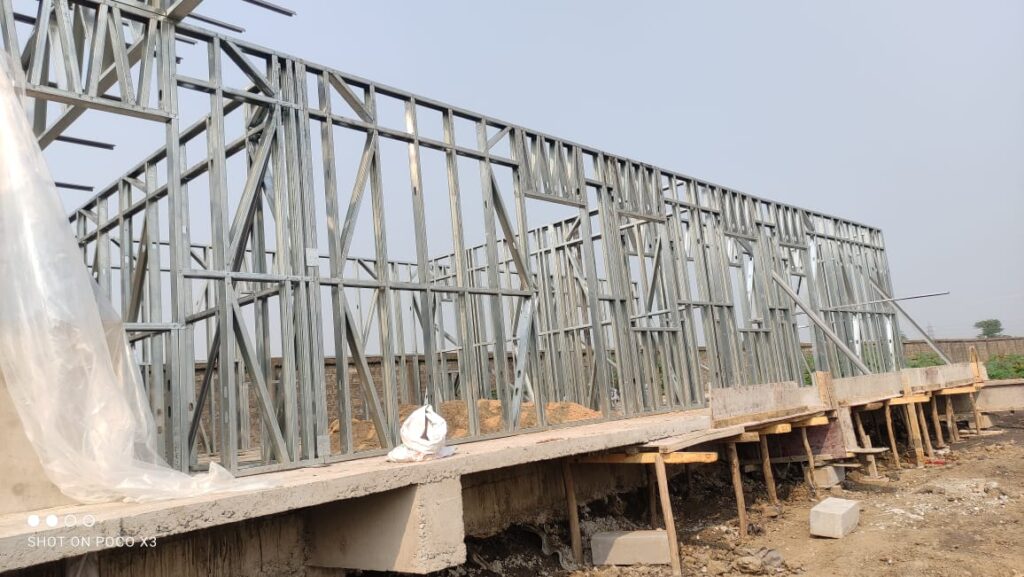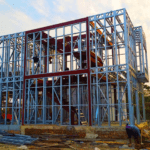Benefits of Using Prefabricated Commercial Buildings
Prefabricated commercial buildings have emerged as a viable and advantageous alternative to traditional construction methods. By leveraging modern manufacturing techniques and streamlined construction processes, prefabricated buildings offer numerous benefits for businesses and developers. Here are some key advantages:

1. Speed of Construction
One of the most significant benefits of prefabricated commercial buildings is the speed of construction. Since the building components are manufactured off-site in a controlled factory environment, they can be produced simultaneously while the site is being prepared. This parallel processing significantly reduces the overall construction timeline. Projects that might take months or even years using traditional methods can often be completed in a fraction of the time with prefabrication.
2. Cost Efficiency
Prefabricated construction can lead to substantial cost savings. The controlled factory setting allows for more efficient use of materials, reducing waste and lowering material costs. Additionally, the reduced construction timeline means lower labor costs and less financial impact from potential delays due to weather or other unforeseen site conditions. These cost savings can be particularly beneficial for businesses looking to expand quickly and economically.
3. Quality Control
The factory-controlled manufacturing process ensures a high level of quality and consistency in the building components. Each module is built to precise specifications using advanced machinery and techniques, reducing the likelihood of human error. This consistency results in a higher quality end product with fewer defects and less rework required on-site.
4. Environmental Benefits
Prefabricated buildings are inherently more sustainable than traditional construction methods. The factory setting allows for better management of resources and reduction of waste. Additionally, the reduced construction time means less disruption to the surrounding environment. Many prefabricated buildings are designed with energy efficiency in mind, incorporating sustainable materials and technologies that reduce their environmental footprint over their lifecycle.
5. Design Flexibility
Modern prefabricated construction offers a high degree of design flexibility. Prefabricated modules can be customized to meet specific architectural requirements and aesthetic preferences. This flexibility allows for creative and innovative building designs that can be adapted to a wide range of commercial uses, from office buildings and retail spaces to healthcare facilities and educational institutions.
6. Minimized Disruption
Traditional construction sites can be noisy and disruptive, often affecting the surrounding community and ongoing business operations. Prefabricated construction minimizes this disruption as most of the building work is done off-site. On-site assembly is quicker and less intrusive, leading to less noise, dust, and overall inconvenience.
7. Enhanced Safety
Construction site safety is a major concern in the industry. Prefabricated construction enhances safety by reducing the amount of work required on-site, where conditions are often less predictable. The factory environment is more controlled and can implement stricter safety protocols, leading to fewer accidents and injuries.
8. Scalability
Prefabricated buildings are highly scalable, making them an excellent choice for businesses planning to expand. Additional modules can be manufactured and added to the existing structure as needed, allowing for flexible growth without the need for extensive renovations or new construction projects.
9. Regulatory Compliance
Factory-built components are constructed to meet all relevant building codes and standards. This compliance is easier to manage in a controlled environment, reducing the risk of non-compliance issues and associated delays. Prefabricated buildings often go through rigorous testing and inspection processes before being transported to the site.
10. Innovative Technology Integration
Prefabricated construction can seamlessly integrate modern technologies, such as smart building systems, energy-efficient HVAC units, and renewable energy solutions. These innovations can be incorporated during the manufacturing process, ensuring that the building is equipped with the latest technology from the outset.
Conclusion
The benefits of prefabricated commercial buildings make them an attractive option for businesses and developers. From cost savings and faster construction times to enhanced quality control and sustainability, prefabrication offers a range of advantages that traditional construction methods cannot match. As technology and techniques continue to evolve, the adoption of prefabricated buildings is likely to increase, driving innovation and efficiency in the construction industry.







































